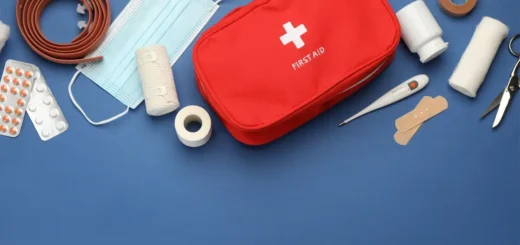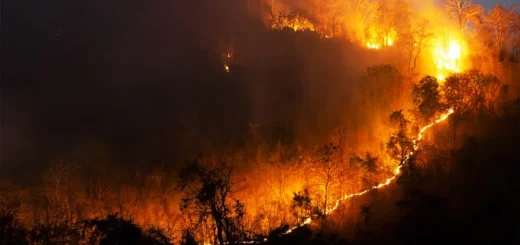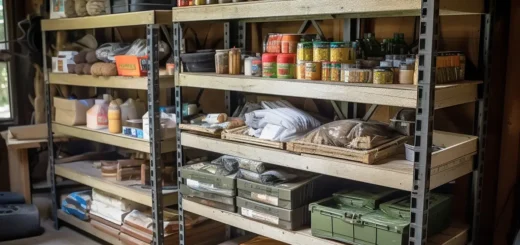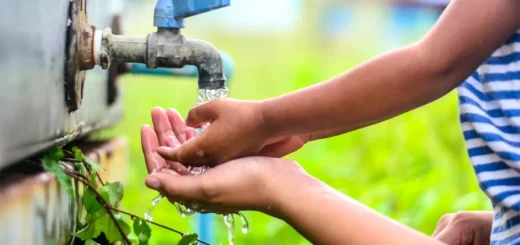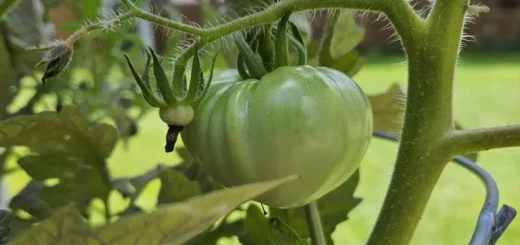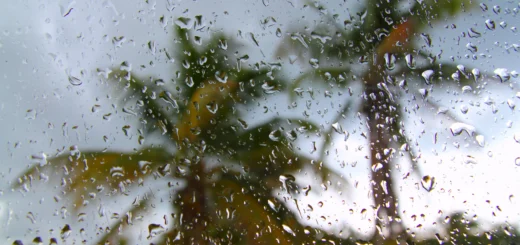Top 6 Life Skills To Have When Preparing For An Emergency
We are not preparing for the Zombie apocalypse, we are preparing for Tuesday and the best way to prepare for an emergency is to know what to do when one happens. Emergencies happen all the time, financial issues, environmental disasters, a house fire, car wreck, bike accident, or a broken arm. These are common and everyday events that you can prepare yourself for and offer assistance when needed.
Table of Contents
First Aid
The most important life skills for emergency preparedness are first aid and CPR.
These two skills can help save lives, whether you’re helping someone who’s injured or trying to get someone out of a building that’s on fire. In any emergency or disaster, first aid and CPR are the critical components that help make sure the patient gets the care they need.
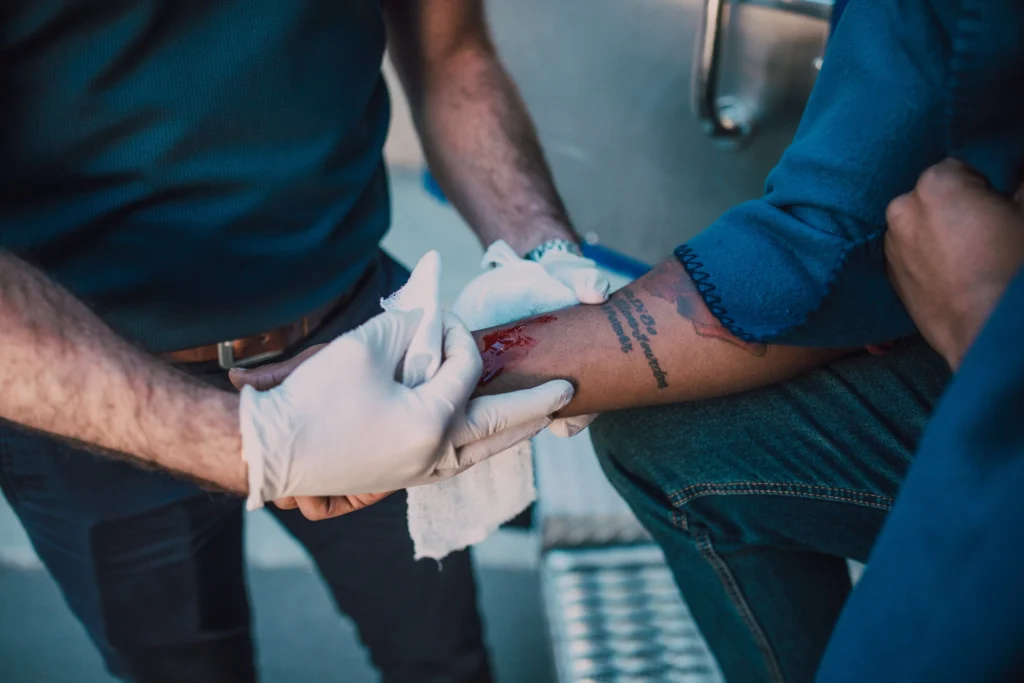
The top first-aid skills to learn are:
- Knowing how to perform CPR (cardiopulmonary resuscitation) and the use of an AED (automated external defibrillator) if someone’s heart stops.
- Knowing how to control bleeding and properly dress wounds.
- Understanding how to recognize and treat shock.
- Recognize and treat common injuries such as fractures, sprains, and dislocations.
- Knowing the signs and symptoms of common illnesses such as heat stroke, hypothermia, and dehydration.
- Knowing how to use your first aid kit.
- Having knowledge of basic first aid such as how to treat burns, cuts, scrapes, bites, and how to remove splinters.
Take a first-aid class or CPR class to keep your skills up to date and learn the latest best practices. Learning how to respond quickly and efficiently to different emergency situations will allow you to help people with injuries while you wait for the medical professionals to arrive.
Community Involvement
During an emergency, your community (friends, family, neighbors, charities, and churches) will play a vital role in helping you and those affected.
Remember you can’t know everything about everything, so seeking help from others and knowing who to reach out to will play a major role in getting the help you and your family may need.
Here are some ways that you can get involved in your community and help prepare for an emergency or help in the aftermath:
- Creating and participating in a community emergency response team (CERT): Communities can train and organize local volunteers to provide immediate assistance in the event of an emergency.
- Supporting local emergency responders: Communities can support local emergency responders by volunteering, donating funds or supplies, or participating in public education campaigns.
- Spreading awareness and education: Communities can help educate their members about emergency preparedness and response through public awareness campaigns and education programs.
- Helping vulnerable population: Communities can help vulnerable populations such as the elderly, disabled, and low-income families by providing assistance with emergency preparedness and response.
- Being informed: Communities can stay informed about emergency situations through local news and social media, and by following the guidance of local emergency management agencies.
- Participating in community drills: Communities can participate in community drills to test and improve emergency response plans.
- Donating to local charities: Communities can donate to local charities that support emergency response and recovery efforts.
- Helping neighbors: Communities can help their neighbors during an emergency by providing basic necessities such as food, water, and shelter.
During an emergency, it’s crucial to follow the instructions provided by local authorities and emergency management agencies.
Vehicle Repair
It is important to have a basic understanding of your vehicle so that you can make simple repairs to keep your vehicle running.
The first step towards keeping your vehicle running is having the right tools. Each vehicle you own should have an emergency supply kit in the trunk. You can buy a kit online or make it yourself. Vehicle emergency supply kits commonly include a car jack, spare tire, jumper cables, flashlight with batteries, first aid kit, rain poncho, duct tape, cloth or tarp, and a small tool kit or a multipurpose utility tool.
Keep your vehicle tuned up with regular maintenance. It is important to have your vehicle in working order before an environmental or community emergency occurs that may cause you to rely on your vehicle more, such as evacuating from a hurricane.
Common vehicle repair skills to learn are:
- How to change a tire, check tire pressure, and how to properly inflate a tire.
- How to jump-start your vehicle if the battery is dead.
- Having a basic understanding of how to check and change the oil and oil filter.
- Knowing how to check and change the air filter.
- Having a basic understanding of how the electrical system works and how to troubleshoot common issues.
- Knowing the location of the fuse box and how to check and replace fuses.
Read your vehicle owner’s manual to understand which dash lights indicate your vehicle is not operating properly and what to do in such a situation. In case of severe emergencies, it’s always better to call for professional help or tow the vehicle to a repair shop.
Gardening
Having a garden can be a valuable asset during an emergency as it can provide a source of food and medicine. Here are a few ways that your home garden can help provide for your family during an emergency:
- Grow your own food: Having a garden can provide a source of fresh fruits, vegetables, and herbs during an emergency, especially if food supplies are limited or disrupted.
- Food preservation: Growing your own food allows you to harvest and preserve it for later use, through methods like canning, freezing or drying.
- Saves money: Having a garden can also help save money by reducing the need to purchase increasingly expensive produce from the grocery store.
- Building self-sufficiency: A garden can help to improve self-sufficiency and reduce your families dependence on external resources.
- Medicinal plants: Growing medicinal plants such as aloe vera, chamomile, and calendula can provide natural remedies for common ailments during an emergency.
- Improve your mental and physical health: Gardening provides a way to improve mental and physical health through regular exercise and exposure to nature.
- Community building: Having a community garden can help build knowledge and share resources.
It’s important to plan ahead, and choose plants that are suitable for the local climate and soil, and that are easy to grow, to ensure that you’ll be able to harvest enough food in case of an emergency. Remember if you are prepping at all, you are doing it right! You don’t need acres of land to start a garden, start small with an indoor vegetable garden or just a few tomato plants in a planter.
Leadership & Teamwork
Leadership skills vary widely and can be developed over time. Major key characteristics for someone in an effictive leadership role would be:
- Communication: The ability to clearly and effectively communicate goals, expectations, and feedback to others as well as interact in an honest way.
- Decision-making: The ability to make sound and prompt decisions based on available information and resources.
- Strategic thinking: The ability to think ahead and plan for the future, taking into account both short-term and long-term goals.
- Emotional intelligence: The ability to understand and manage your own emotions, as well as the emotions of others.
- Flexibility: The ability to adapt to changing circumstances and to be open to new ideas as information becomes available.
- Delegation: The knowledge needed to assign tasks to individuals and how to get them to operate as a single unit and to trust them to complete the task successfully.
- Visionary: The ability to set a short or long-term goal, provide direction to the group and follow through to achieve it.
These leadership skills can be taught and developed through prepping (training, research, and education). Don’t get comfortable, a leader should always be willing to learn and improve their skill sets.
Crafts
In an emergency, the top craft skills that will be useful include:
- Sewing: to repair clothing and fabric items
- Knot tying: for securing items (tarps, truckloads) and making shelters (setting up a tent)
- Carpentry: repairing homes or shelters
- Fire making: for warmth and cooking
- Navigation: After a disaster, your neighborhood, community, or town may not have any of the common landmarks you used before. You’ll need to know how to find your way around or direct emergency agencies in unfamiliar and often hazardous terrain.
Having a basic understanding of survival skills, such as finding food and water, and shelter will be extremely valuable in an emergency situation.


